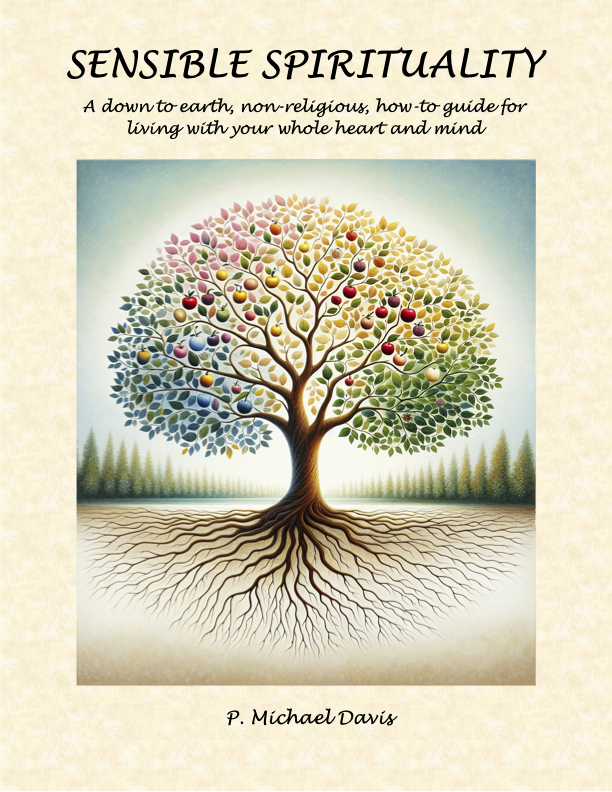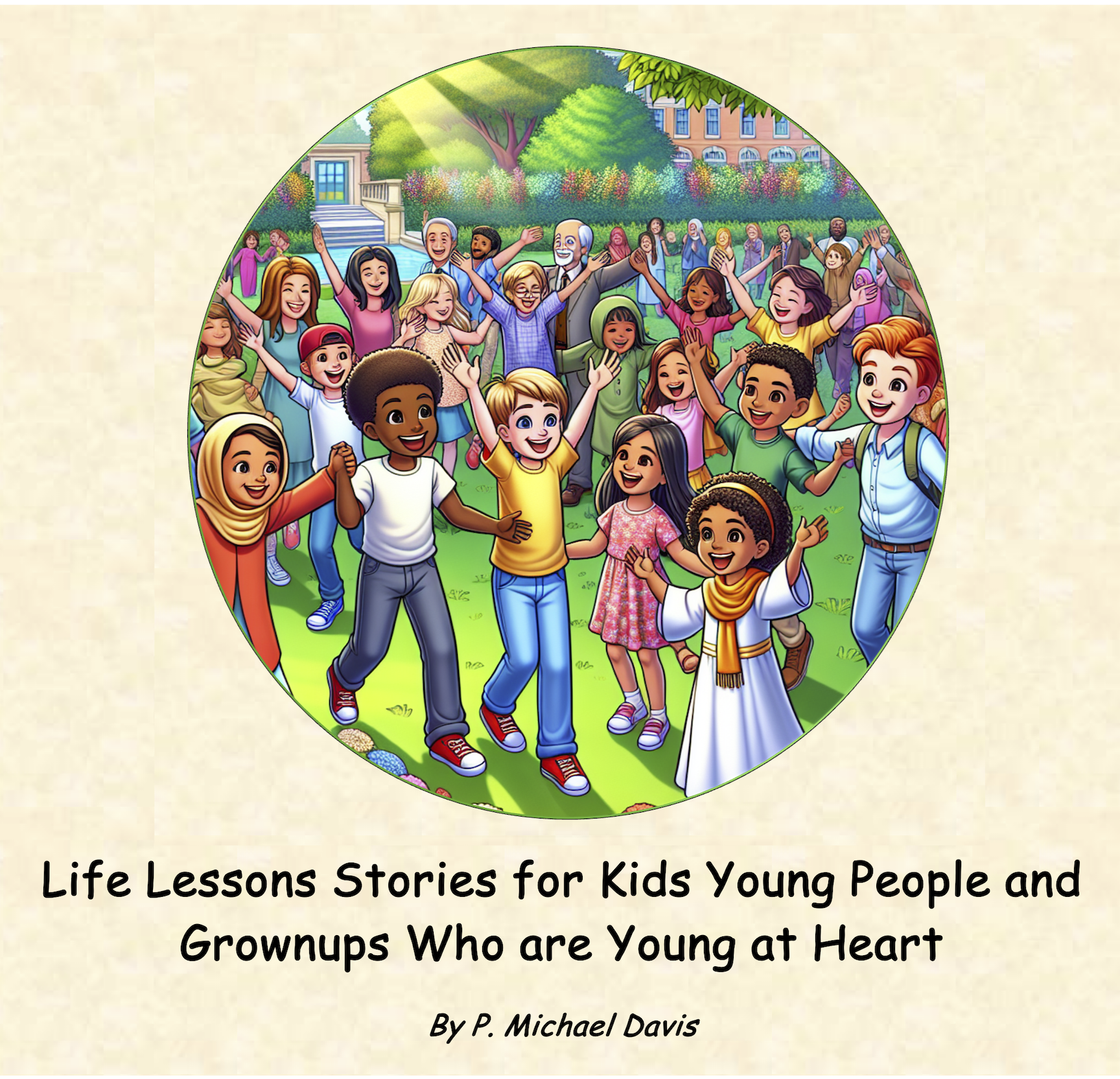Having a Real God Relationship

Understanding a real God relationship is incredibly difficult. We can try to make sense of how it shapes our thinking, guides our actions and behavior, and creates a life of meaning, fulfillment, joy, peace, and love, but we live in a culture rife with conflicting messages about God and the meaning of our lives. It’s not surprising that we have trouble living a genuinely spiritual life when the cultural messages run the gamut from confusion about who and what God is to an outright denial that God exists.
How can we be expected to make sense of that?
Here’s an example. Let’s try and put the basic thought about God together from the three major cultural religions Judaism, Islam, and Christianity:
- God is perceived of as the supreme being, creator deity, and principal object of faith.
- God is perceived as being omniscient (all-knowing), omnipotent (all-powerful), omnipresent (all-present) and as having an eternal and necessary existence.
- God is most often held to be incorporeal (having no physical form). These non-physical and physical concepts of God are related to the dual concepts of the transcendence (being outside nature) and the immanence (being in nature) of God, the ultimate "immanent transcendence".
- Some religions describe God without reference to gender, while others or their translations use terminology that is gender-specific and gender-biased.
- God has been perceived as either personal or impersonal.
- God is described as the creator and sustainer of the universe, while in deism, God is the creator, but not the sustainer, of the universe. In pantheism, God is the universe itself.
- God has also been perceived as the source of all moral obligation, and the "greatest conceivable existent". Many notable philosophers have developed arguments for and against the existence of God.
- In addition, each of these religious bodies claim that their individual way of describing and relating to God is the only acceptable and true way, and at some historical point, they have gone to war with people who disagreed with them.
Is it any wonder that trying to make sense of just who God is or what God is like becomes so confusing? Mark Twain said it well when he wrote, "In the beginning God made man in His image. And man has been returning the favor ever since."
How in the name of whoever and whatever can we begin to grasp the reality of God?
- Well, some people just give up on spirituality because it seems too hard to make sense of any of it. They say, “This spirituality stuff is far too complicated for me. I have better things to do than to bothered with it.”
- Others know that there is a God, but they don’t ask any questions and live a blind faith in a concept of God. They are given an idea to believe by someone or some religious body, and they follow it whether it makes any connection or any sense to them or not.
- Still others believe and try to live in a way that feels like it would be a life that God, who they don’t really have much experience with or context for, would want. In essence, they just try to be good people without a real God relationship.
- Some just go through the religious motions because the motions are something they can wrap their brains around.
- Some profess to believe and adhere to a set of creeds, rules and practices out of fear that they will be punished by God if they don’t.
So how do we get past the confusion? What do WE do?
First and foremost, we have to accept that in spite of all of that confusing stuff, there is a real God who loves us, knows us and wants to be known by each and every one of us. As we start trying to open ourselves up to that real God, we have to depend upon our own experience and upon the witness of others who have experienced the real God’s presence in their lives.
It is okay and often helpful to be involved with religious institutions and to seek wisdom in spiritual writings as long as we remember that they have not cornered the market on the truth about God. If that were the case, then what they all have to say wouldn’t be so confusing. It is also critical to realize that any message which demands our obedience by means of heavenly treats or hellish fear does not come from God.
As we grow in a real God relationship, we learn to trust that experience, and the confusing things become far less important. As we allow ourselves to grow closer to God, the wonderful truth about both God and about us and what our life is all about becomes more and more clear.
How do we navigate our way to this real God relationship?

If you read my Everyday God Relationship page you might remember that I started to answer that question with a section which talked about the first of two pieces of writing. The first one from the Jewish scriptures was this.
Psalms - Chapter 46 verse 10
“Be still and know that I am God.”
Please feel free to go back to this page (the link is above) and read that section if you haven’t yet.
The second reading, from the Christian scriptures, was written by the Apostle Paul in his letter to the Romans.
Paul’s Letter to the Romans – Chapter 12 verse 2
“Don’t be like the people of this world, but let God change the way you think. Then you will know how to do everything that is good and pleasing to God.”
I truly believe that after we learn to “be still”, this reading suggests that still place is where the confusion about God falls away.
“Let God change the way you think.” God’s very nature is love and truth. Therefore, if we allow God to change the way we think and what we believe, then we will know how to enter into the kind of real God relationship that God wants. But how do we let God quiet the confusion and change the way we think and what we believe?
In order to adequately answer that question, let’s begin with exploring how we tend to get caught in negative and destructive patterns of thinking which block us from experiencing God’s presence. Then we’ll explore ways to overcome those patterns and discuss how to open our minds and spirits to God’s transforming guidance.
The reading from the Letter to the Romans begins with this advice: “Don’t be like the people of this world.”
It is no surprise that in our culture, negative and pessimistic thinking is taken much more seriously and occupies much more of our time and energy than positive, and optimistic thinking. In a recent study from Penn State University, researchers asked people in Chicago and Mexico City to spontaneously list the names of as many emotions as they could. The words were categorized as negative, positive or neutral. They found that regardless of culture, age or social status, the people knew significantly more words that describe negative emotions than positive ones. The study found that 50% of the words were negative, 30% were positive and 20% were neutral. Why was this the case? Researchers suggested that negative emotions are triggered when people focus on what is wrong, dangerous, or threatening and that being prepared for the negative is more acceptable than focusing and being prepared for the positive.
So, one way to interpret the reading is to avoid focusing our minds on culturally acceptable negativity. We could instead focus on letting God change the way we think about life.
How do we let go of our focus on negativity?
First, we define and own up to our negative thought habits:
- Polarized thinking – Everything must be either wonderful or terrible. If I am not perfect at anything, then I am a failure.
- Jumping to conclusions – I have this great plan for a project at work, but everybody is going to hate it and I will probably get fired just for bringing it up.
- Personalizing – My best friend is sad, so I must have done something to upset him/her.
- Shoulds – The rules are always right for all people. If I break a rule, I feel guilty. If you break a rule, it makes me angry.
- Catastrophe thinking – Nothing is ever going to go right. Murphy’s Law. Since that is the case, what if, what if, what if, . . .
- Filtering – Focusing on a negative detail regarding something and then magnifying it until any positive aspect or hopeful outcome has completely vanished.
There are certainly many more examples of negative thinking, but we need not dwell on them here. Our task is to find out how to identify them and let go of negativity so that God can enter into our thinking processes and guide us to a better and more productive way of life.
The Trouble Bush

I have a friend who was without a doubt the most negative person that I had ever known. He always focused and ruminated on the dark and negative side of just about any situation. After years of living this way, he went to a therapist who gave him a coping mechanism that he found very helpful. The therapist recommended that he purchase a “Trouble Bush” and put it right outside his front door.
The first time I saw him use it, I had no idea what he was doing. We had come to his house from work. When he reached the door, he stopped at the bush and began taking invisible things from around his neck and from off his shoulders and hanging them on the bush. To be clear, there was nothing visible hanging from the bush and I kind of wondered if he had finally gone ‘round the bend mentally. When we got inside, I asked him what he was doing with the bush. He explained that his therapist had him go through a simulated process of removing any troubles and negative thoughts from his mind and hanging them on the bush before he entered his house. This way, when he went inside, the negativity would be left outside, and he was not to think about anything left on the bush until the next morning when he went back out and put them back on again. He told me that it really did help because he didn’t have to give up his negativity. He only had to take a break from it when he was in the house. He said that he did find when he went out to pick up the negative thoughts and troubles from the bush, they were not as serious in the morning as they had been the night before. Some of them had even slipped from his memory and were no longer there. I would like to tell you that he got past his negative thinking and never had any problems with it again, but that isn’t true. But he did so much better at coping with his negativity that he really did seem to live a much happier life. So, the trouble bush might be a helpful coping mechanism for replacing negative thoughts.
What else can we do to bypass negative thinking?
- Write your negative thoughts down, instead of just thinking about them endlessly. When we write something down it helps to eliminate it from our mind and make it easier to deal with it and move beyond it.
- Work on establishing new patterns of thinking. I had a person I was counseling once tell me that when she realized why she had been so angry for so long she was afraid to let go of the anger because she had nothing to put in its place. What we put in place of negativity are the things that we can feel good about right here and now. Those things could be your cat, dog or goldfish. It could start with being somewhere that makes you feel good, listening to music or spending time with someone special in your life. Ultimately, we want to replace that negativity with God’s unconditional love and acceptance . . . but it is important to start with something concrete and easy.
- Focus on the things for which you are most grateful. There is nothing more important for putting negativity into perspective than being aware of and celebrating the small, constantly recurring good and uplifting things that go on around us every day. They may be as simple as a sunset or moon rise, or the look and smell of flowers that lift your spirit. A baby’s smile can be a powerful thing. Make yourself a gratitude list and refer to it whenever you find yourself sliding into a negative thought pattern.
- Reframe. If today is a bad day, think about it in the context of the next month. Remember that there will be good days to balance it. The pendulum always swings to the other side. In the context of your whole life, surely goodness and God will overcome.
These are just a few of many ways that help us to bypass negativity and put us in a position to allow God to changing our thinking patterns and draw us into a real God relationship.
Once we are able to “be still” and overcome our negative thought patterns then we are ready to move forward with letting God change the way we “think” so that we can enter into a real God relationship and begin to experience life from God’s point of view.
Sensible Spirituality
A down to earth, non-religious, how-to-guide for living with your whole heart and mind
While there are a multitude of books about personal development and spiritual growth, author and storyteller P. Michael Davis goes down a different path by offering a real-life conversation about how to build and maintain a positive and spiritually healthy life.
His approach is thoroughly non-religious, entertaining, and devoid of jaw clenching seriousness. He will walk you through the whys and how tos of spiritual awareness, spiritual relationship building, spiritual love, and spiritual parenting for children and adolescents.
Sensible Spirituality is available, by clicking the book cover above, in kindle, paperback, and audio book formats at Amazon.com.

